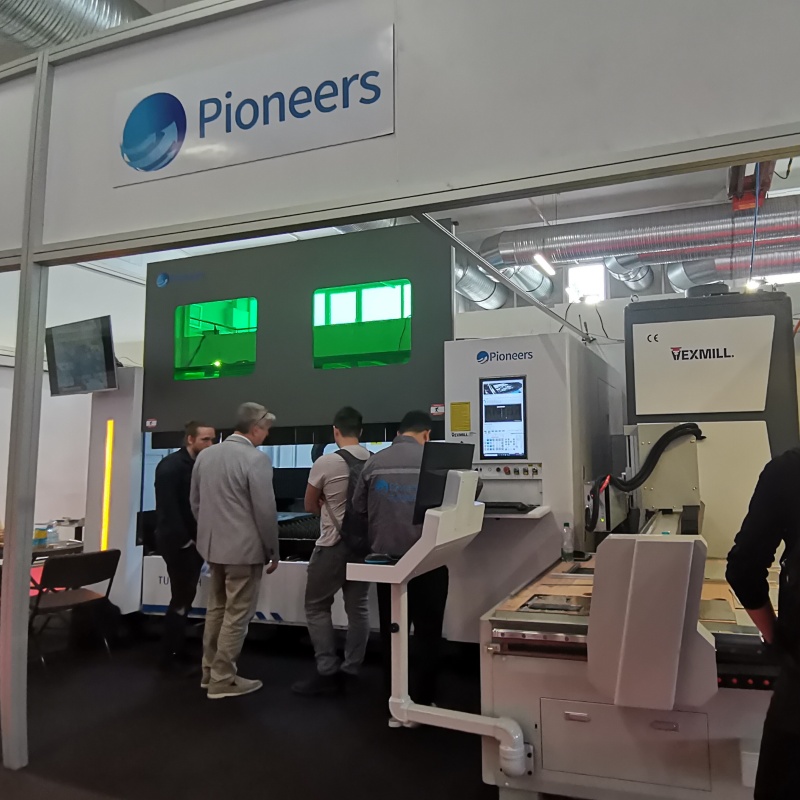In the process of manufacturing industry moving towards high-end, intelligent and green, laser welding equipment is in the eye of the storm of technological innovation. Its future development closely revolves around the deep integration of ultrafast laser, automated integration and green manufacturing, reshaping the landscape of industrial production.
As a cutting-edge technology, ultrafast laser has opened up a new dimension for laser welding. In traditional laser welding, heat diffuses in the material, which easily leads to the expansion of the heat-affected zone and affects the welding quality. However, the pulse width of ultrafast laser is in the order of picoseconds (10⁻¹² seconds) or even femtoseconds (10⁻¹⁵ seconds), and it releases high energy instantly when it reacts with the material, completing the processing before heat diffusion occurs. For example, in the welding of medical precision instruments, such as heart stents, which are tiny and have strict requirements on precision and thermal effects, ultrafast lasers can achieve micron-level or even nano-level precision welding, with smooth welds and extremely small heat-affected zones, ensuring the biocompatibility and reliability of the instrument, and greatly improving product quality and performance. In addition, ultrafast lasers can process high-hardness, high-brittleness and high-melting-point materials, broadening the selection range of welding materials, making it possible to combine materials that were previously difficult to weld, and providing support for new product development and innovative applications.
Automation integration gives laser welding equipment “smart brain” and “flexible limbs”. On the one hand, by introducing industrial robots, automated conveyor lines, etc., the welding process has moved from manual operation to full automation. In automobile manufacturing, the body welding production line uses robots equipped with laser welding heads to accurately operate according to preset programs, which can quickly complete the welding of complex body structures, greatly improving production efficiency, while avoiding quality fluctuations caused by manual operation and ensuring product consistency. On the other hand, automation integration realizes real-time monitoring and intelligent control of the welding process. With the help of sensors, data such as temperature, penetration depth, weld shape, etc. during welding are collected and transmitted to the control system. The artificial intelligence algorithm is used for analysis to timely adjust parameters such as laser power and welding speed to ensure stable welding quality. For example, in 3C product manufacturing, for the welding of tiny components of different models of electronic products, automated laser welding equipment can quickly switch parameters to adapt to diversified production needs and significantly improve production flexibility.

Green manufacturing has become an inevitable follow-up for the development of laser welding equipment. In terms of energy consumption, new laser crystal and fiber laser technologies have made continuous breakthroughs, improving the efficiency of laser generation and transmission and reducing energy consumption. Compared with traditional equipment, the new generation of fiber lasers has greatly improved the efficiency of power conversion, reducing power consumption in the production process, and meeting the company’s energy conservation and emission reduction goals. At the same time, the laser welding process is optimized to reduce smoke and harmful gas emissions during welding, reduce health hazards to operators and environmental pollution. For example, in some food and pharmaceutical packaging welding with extremely high environmental requirements, the green laser welding process can not only meet the welding quality requirements, but also ensure a clean and safe production environment. In addition, the equipment design adopts a modular concept to facilitate maintenance and component replacement, extend the service life of the equipment, improve resource utilization, reduce waste generation, and practice the concept of circular economy.
Looking to the future, ultrafast lasers, automated integration and green manufacturing will continue to evolve in the field of laser welding equipment. As technology matures and costs gradually decrease, laser welding equipment will be popularized and deepened in more industries, expanding from high-end manufacturing to daily consumer goods production and other fields. In key industries such as new energy vehicle battery welding, aerospace parts manufacturing, and the electronic information industry, it will become a key force in promoting industrial upgrading and enhancing core competitiveness, and inject continuous impetus into the sustainable development of the global manufacturing industry.



